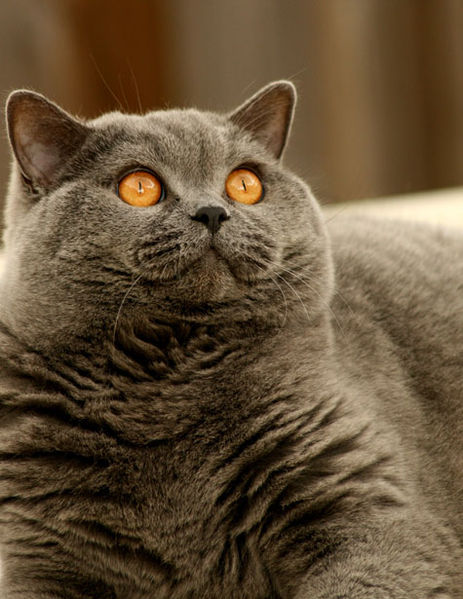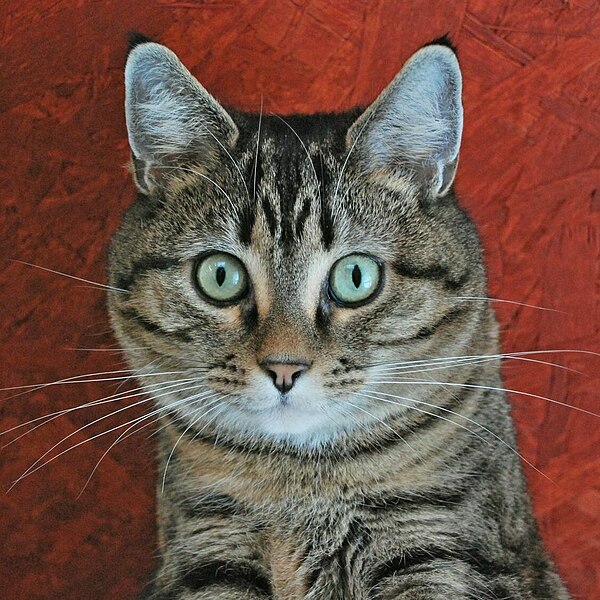The British Shorthair is the pedigreed version of the traditional British domestic cat, with a distinctively stocky body, thick coat, and broad face. The most familiar colour variant is the "British Blue", with a solid grey-blue coat, pineapple eyes, and a medium-sized tail. The breed has also been developed in a wide range of other colours and patterns, including tabby and colourpoint.
British Shorthair in the classic colour ’blue’.
An early example of the "English type" Blue Shorthair, from Frances Simpson's Book of the Cat, 1903
A young British Blue male showing the copper eyes typical of cats with 'blue' fur
A fully mature British Blue male, showing the characteristic heavy jowls and unique "crisp" texture of the coat.
A tabby cat, or simply tabby, is any domestic cat with a distinctive M-shaped marking on their forehead, stripes by their eyes and across their cheeks, along their back, around their legs and tail, and characteristic striped, dotted, lined, flecked, banded, or swirled patterns on the body: neck, shoulders, sides, flanks, chest, and abdomen. The four known distinct patterns, each having a sound genetic explanation, are the mackerel, classic or blotched, ticked, and spotted tabby patterns.
Mackerel tabby, with the distinctive striped pattern and forehead 'M'.
A European wildcat (Felis silvestris) bearing a similar coat pattern to that of a tabby cat. It is thought that the tabby pattern originates from the numerous related species of wildcat.
A 19th-century drawing of a tabby cat
Typical tabby patterns in the head region: An 'M' on the forehead, bright eye rims and borders of the ears








